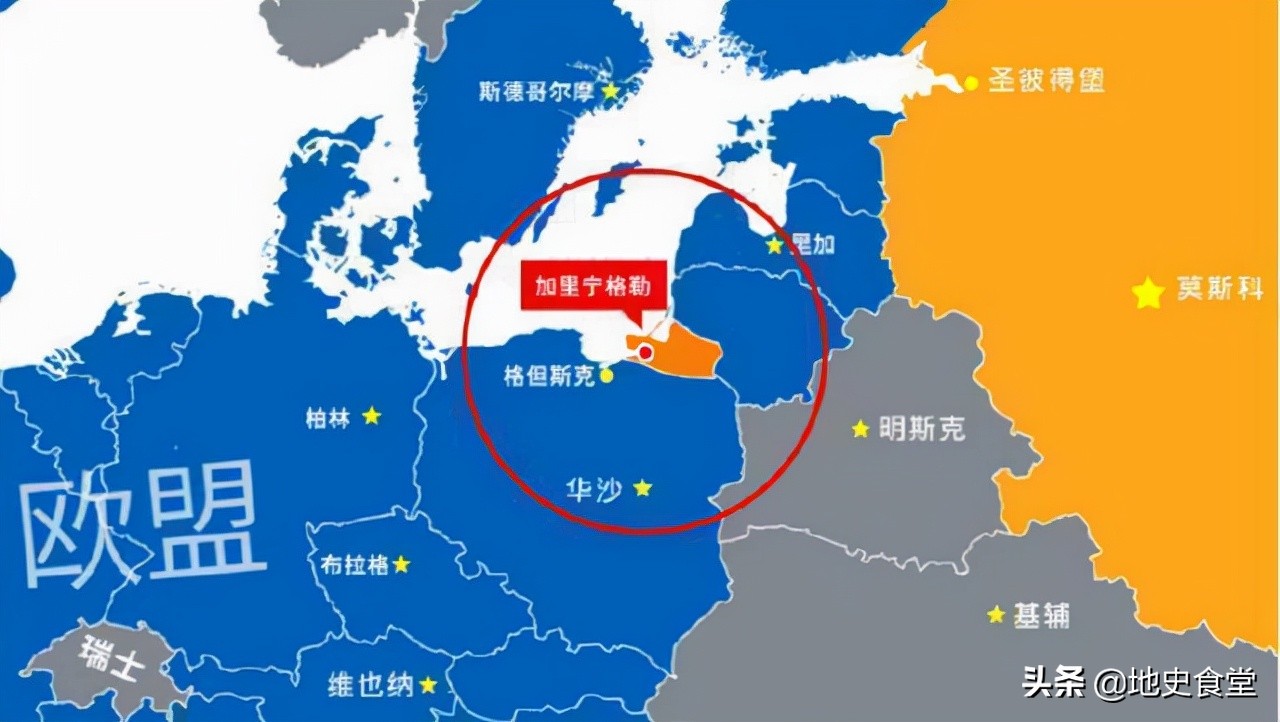In the European part of Russia, there are three main directions to the sea, the first is the direction of the Arctic Ocean, represented by the port of Murmansk. The port of Murmansk is an excellent ice-free port, and it is directly facing the Arctic Ocean, and there is no restriction on going to sea.
The second direction of going to sea is the direction of the Black Sea, mainly Sevastopol, Sochi, Novorossiysk and other ports, Russian Black Sea ports are mostly ice-free ports, but the Black Sea is an inland sea, connected to the Mediterranean Sea through the Turkish Strait, and the sea is restricted by Turkey.

The third direction of departure is the Baltic Sea, and the main ports are St. Petersburg, Vyborg, Kronstadt, and Kaliningrad. Of Russia's Baltic ports, only Kaliningrad is an ice-free port, which once belonged to Germany and was assigned to the Soviet Union after World War II.
Kaliningrad is located in the southeast of the Baltic Sea, with a relatively low latitude, becoming the only ice-free port in the Russian Baltic Sea. The other three ports, St. Petersburg, Vyborg and Kronstadt, are located in the Gulf of Finland in the northeastern Baltic Sea.
The waters of the Gulf of Finland are low in salinity, cold in winter, and have an ice period of three to five months per year. In addition to this shortcoming, after the collapse of the Soviet Union, Russian ports in the Gulf of Finland would be subject to Finland and Estonia.
First, geographical reasons. The Gulf of Finland is a slender bay, about 400 km long from east to west and 19 to 130 km wide from north to south. The entire Gulf is divided into three countries: Russia, Finland and Estonia.
Located on the northern shore of the Gulf of Finland, Finland has a total area of 338,000 square kilometers, a coastline of 1,100 kilometers, and 179,000 islands, including many in the Gulf of Finland, which are also owned by Finland. Estonia is located on the eastern shore of the Baltic Sea and on the southern shore of the Gulf of Finland, bordering Latvia and Russia respectively.
Russia is located on the eastern shore of the Gulf of Finland, and this stretch of coastline is not very long. Most of the coastline of the Gulf of Finland belongs to Finland and Estonia, coupled with the many islands in the Gulf of Finland, the coast is steep and tortuous, and there is an ice period in winter, so it is very inconvenient to go to sea.
Second, for historical reasons. Russia's Baltic coastline, although not long, is not easy to obtain. The Gulf of Finland has historically been owned by Sweden, including Finland on the north coast, Estonia on the south coast, and St. Petersburg in Russia on the east coast.
In order to seize the Baltic Sea, as early as the reign of the Russian Tsar Ivan IV, the Livonian War was launched, but this war ended with the defeat of Russia, the victory of Sweden and other countries, and Russia did not obtain the Baltic Sea. It was not until the reign of Peter I that Russia defeated Sweden and seized the Baltic Sea outlet. In 1703, Peter I ordered the construction of St. Petersburg here as the capital of Tsarist Russia and a window to Europe.
St. Petersburg is located on the east coast of the Gulf of Finland, when the southern and northern shores of the Gulf of Finland still belong to Sweden, in order to break the Swedish restrictions, Tsarist Russia and Sweden have fought many wars, forcing Sweden to cede Estonia, Finland and other places to Czarist Russia, in 1809, with the incorporation of Finland, Tsarist Russia finally seized full control of the Gulf of Finland.
After the fall of Tsarist Russia in 1917, Finland and Estonia became independent respectively, and the Soviet Union annexed Estonia in 1940 in order to break the constraints between the two countries, and through the Soviet-Finnish War, forced Finland to sign the Moscow Peace Agreement to cede large areas of land in the Karelian Isthmus and other areas to the Soviet Union, and leased the Hanko Peninsula on the north shore of the Gulf of Finland for export to the Soviet Union.
The Hanko Peninsula, located on the northern shore of the Gulf of Finland exit, could form a shutdown with Estonia on the southern shore, and although the Soviet Union did not annex Finland, it also gained control of the Gulf of Finland, breaking the constraints of Finland and Estonia. However, after the collapse of the Soviet Union, Estonia gained independence, and the pressure on Finland was greatly reduced, so Russia's sea travel was once again constrained by Finland and Estonia.